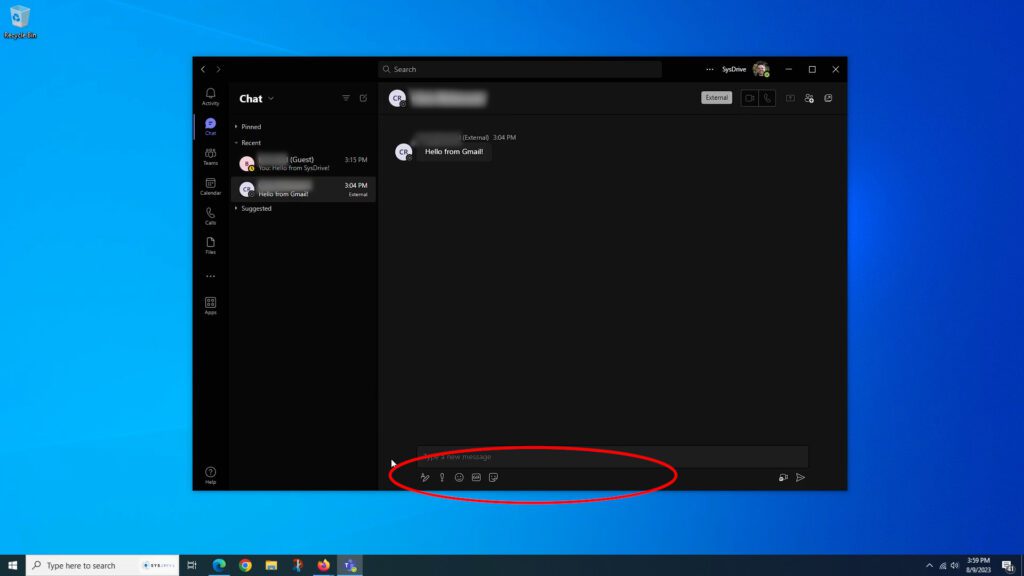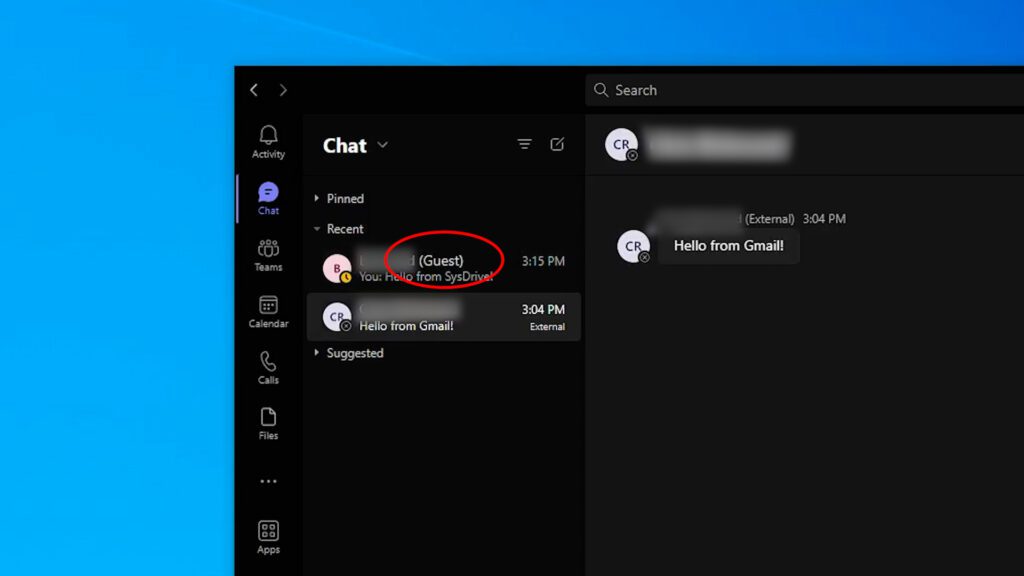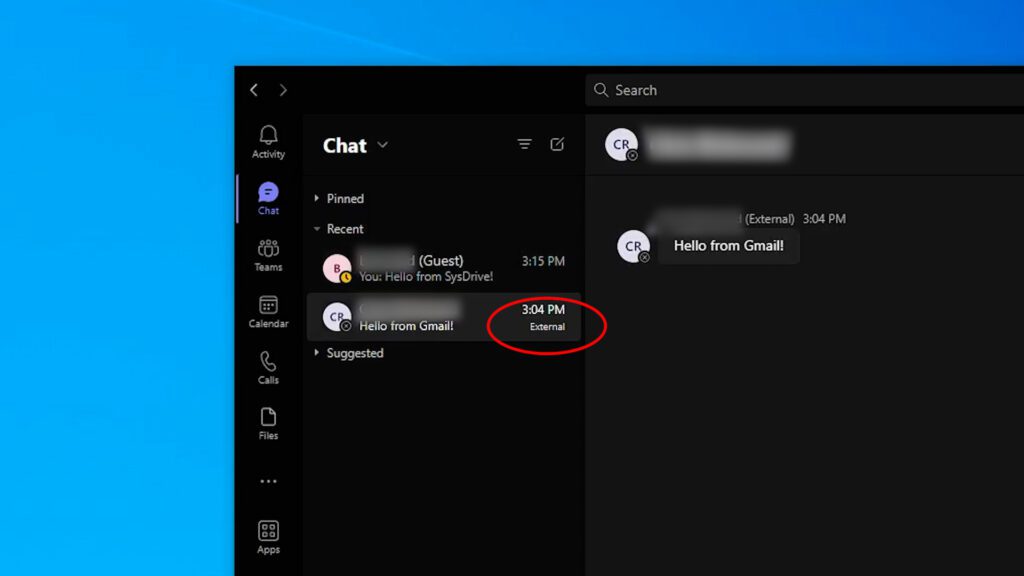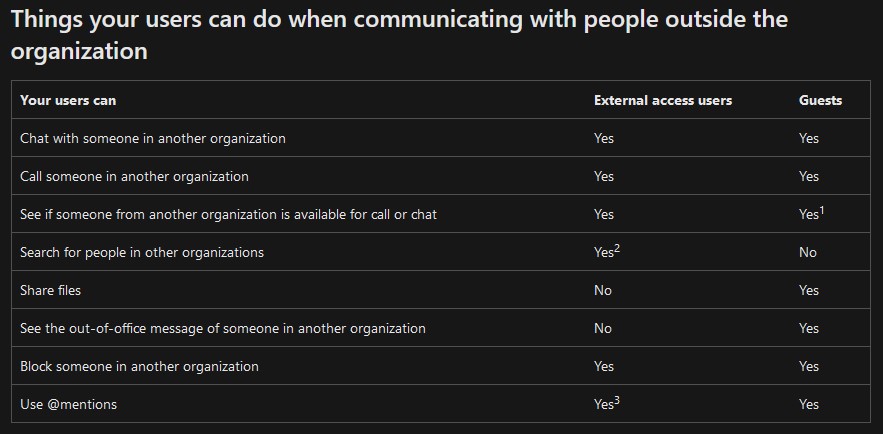Video not loading? Watch on YouTube
Prerequisites
We will assume that either you are the MS 365 tenant administrator or you have confirmed from your tenant admin that the missing features (example: Attach File icon) are allowed by the currently configured Teams policy settings.
Reported Issue
A popular frustration we hear when working with Microsoft Teams for chat is wondering why you are missing the attach file icon with only specific users, even when file attachments are allowed according to the Teams configuration
In the example for this article, I am logged into the Teams client app with my company account, so it is directly part of our MS365 tenant. We also have allowed most features to be available with Guest users, including the ability to attach files.
This first chat we see is with a user who is a guest, and we can see that all the chat icons are
available for us to use.

We then change over to look at another chat that has been started, and most of the icons are missing, including the popular paperclip icon to attach a file.

The Culprit
The reason for this difference between 2 chats is right here on the screen, but it’s not very descriptive, and
the Teams Admin center doesn’t point out this situation when editing policies.
If we look at our first chat, we notice the user has “Guest” listed next their name.

The chat below that is missing the icons is labeled as “External”. This is the difference between the two chats, and what causes our problem.

In Microsoft 365, a guest user is someone you have specifically invited to be part of your MS 365 environment in some way. It could be they were invited to be join a Team discussion inside the Teams app, join a Sharepoint site, or you shared a file with them from your OneDrive. Regardless of how they invited to interact with you, there was a specific invite to that person.
On the other hand, External users in teams are someone that you interact with, but they were not specifically invited. In Teams, this can easily happen because you can start a new chat message and send it to anyone if you know their email address, similar to how you can start a conversation with someone in Skype or other messaging apps by just knowing their username. The exception to this “open” nature of communicating is that this is an option in the Teams admin console where you can block external connections for your users.
Why is There a Difference in Guest vs. External Users?
For now, that’s a global decision put in place by Microsoft.
Here is a chart showing some difference in features between guest and external users, including file sharing. We are also sharing the link to the Microsoft article as the source for this chart where you can see additional details in how your organizational users interact differently between guest and external users.

Source: https://learn.microsoft.com/en-us/microsoftteams/communicate-with-users-from-other-organizations
Resolution
The easiest method to solve the problem of restricted features with an external user is to invite them as a guest, assuming your organization allows you to do so. A few common ways of inviting a guest:
- add them as a participant to a Team inside of the teams app
- add them as a member to a Sharepoint site
- share a file with them from OneDrive
- Administrators of Office 365 or Azure Active Directory can also send
guest invitations from the User admin screens in each Admin portal